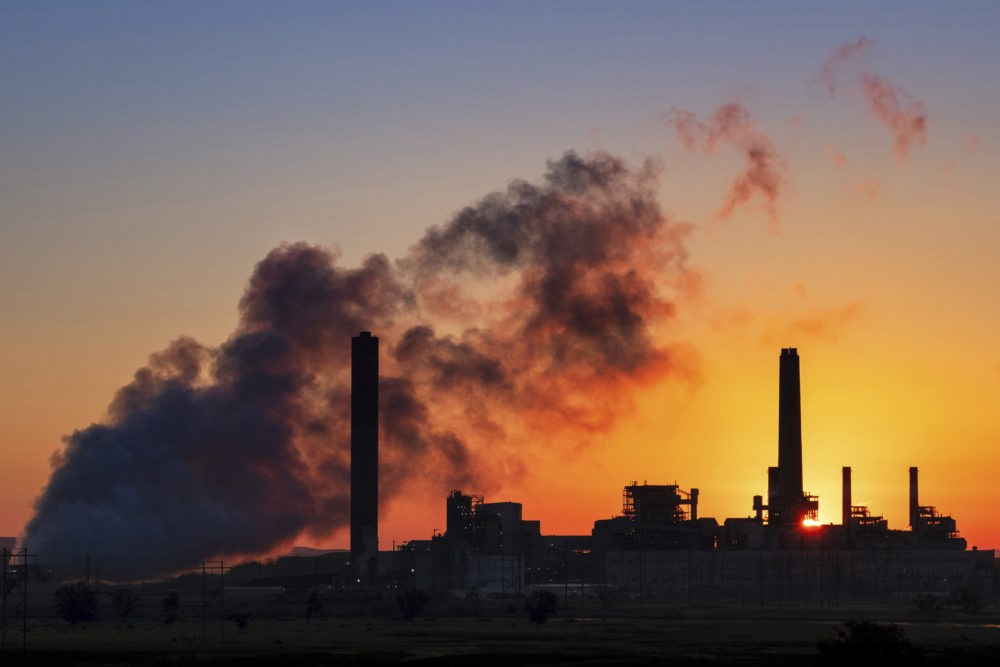Advertisement
The Future Of Carbon Capture: An Old Idea To Fight Climate Change Gets New Look
Resume
In a letter to Congress early this year, more than 600 environmental groups called carbon capture and storage “corporate schemes that place profits over community burdens and benefits.”
Greenpeace, Sunrise Movement, and other groups leading the fight against climate change asked Congress not to build climate legislation using “market-based mechanisms and technology options” like carbon capture that some believe serves as a smoke screen for fossil fuel interests.
Despite pushback from environmental groups and activists, the Intergovernmental Panel on Climate Change included carbon dioxide removal as a necessary factor to reduce emissions in a special report on limiting global warming to 1.5 degrees Celsius.
Activist Greta Thunberg often referred to this same report in her speech to world leaders at the U.N. Climate Action Summit last month, but she also criticized carbon capture.
“They also rely on my generation sucking hundreds of billions of tons of your CO2 out of the air with technologies that barely exist,” she said.
Capturing carbon could help prevent burning through the world's carbon budget, which is the amount of greenhouse gas pollution that scientists say humans can produce before incurring the worst effects of climate change. But will environmentalists on the left ever warm up to the idea?
Giana Amador, co-founder and managing director of nonprofit Carbon180, says carbon removal solutions are critical to fighting climate change.
There are two types of carbon capture: point-source capture, which entails extracting carbon from smokestacks during energy production or an industrial process, and direct air capture — removing carbon directly from the atmosphere, she says.
Air contains about .04% carbon compared to other particles, but the total amount in a smokestack is between 70% to 80%, so it’s more difficult to remove carbon from the atmosphere than from smokestacks, Amador says.
Five companies across the world are developing this new technology and “deploying first-of-a-kind projects, she says.
“These entrepreneurs are working on solving the thermodynamic issue of getting that carbon from the air,” Amador says.
Some of these solutions are already at work. In Switzerland, a company called Climeworks is capturing carbon and using it to help grow plants in a greenhouse.
Last month, the U.S. Department of Energy’s Office of Fossil Energy announced a $110 million investment in research and development for carbon capture to “further the administration’s commitment to strengthening coal while protecting the environment,” according to a statement.
After releasing a climate plan that supports carbon capture, former Vice President Joe Biden was accused of directly taking language about the practice from fossil fuel-backed group Carbon Capture Coalition — which lists Shell, Peabody Energy and Arch Coal as members in a May 2019 report, among other energy and steel companies.
Mayor Pete Buttigieg, Sen. Amy Klobuchar and entrepreneur Andrew Yang have called for carbon capture in their climate plans, while Sen. Bernie Sanders’ Green New Deal calls it a “false solution.”
Amador says the concern that politicians may use carbon capture to justify stalling meaningful changes to energy and transportation systems is fair. But she believes the technology can be used to offset emissions released at traditional fossil fuel energy plants and help achieve climate goals like keeping the global average temperature rise below the U.N.’s target of 2 degrees Celsius.
After carbon is removed, a pure stream of CO2 is compressed and transported to a site that pumps it into the ground.
The U.S. has an “almost unlimited” capacity to store carbon underground, though that’s not true for many other countries, Amador says.
“Unlike plastics, it's not us putting something in a landfill that wasn't there originally,” she says, “but it actually is very in line and in tune with the geology today.”
This technology can be commercialized in many ways like pumping carbonation into beverages, she says. And the possibilities go beyond familiar uses of the gas — carbon tech refers to the practice of converting excess carbon into products like cement, plastic, fuel and consumer goods.
“We estimated that that market size was over $1 trillion in the U.S. and over $6 trillion globally,” Amador says. “So that economic opportunity is really exciting — when we're able to pair growing the economy, creating jobs, while also solving the climate crisis.”
Amador acknowledges that high costs affect Carbon180’s ability to deploy these solutions, but she says every new technology starts off expensive.
“We need to invest in the research and deployment of these solutions,” she says, “so that we can actually get them to scale in the next 15 years.”
Chris Bentley produced and edited this interview for broadcast with Kathleen McKenna. Allison Hagan adapted it for the web.
This segment aired on October 1, 2019.

